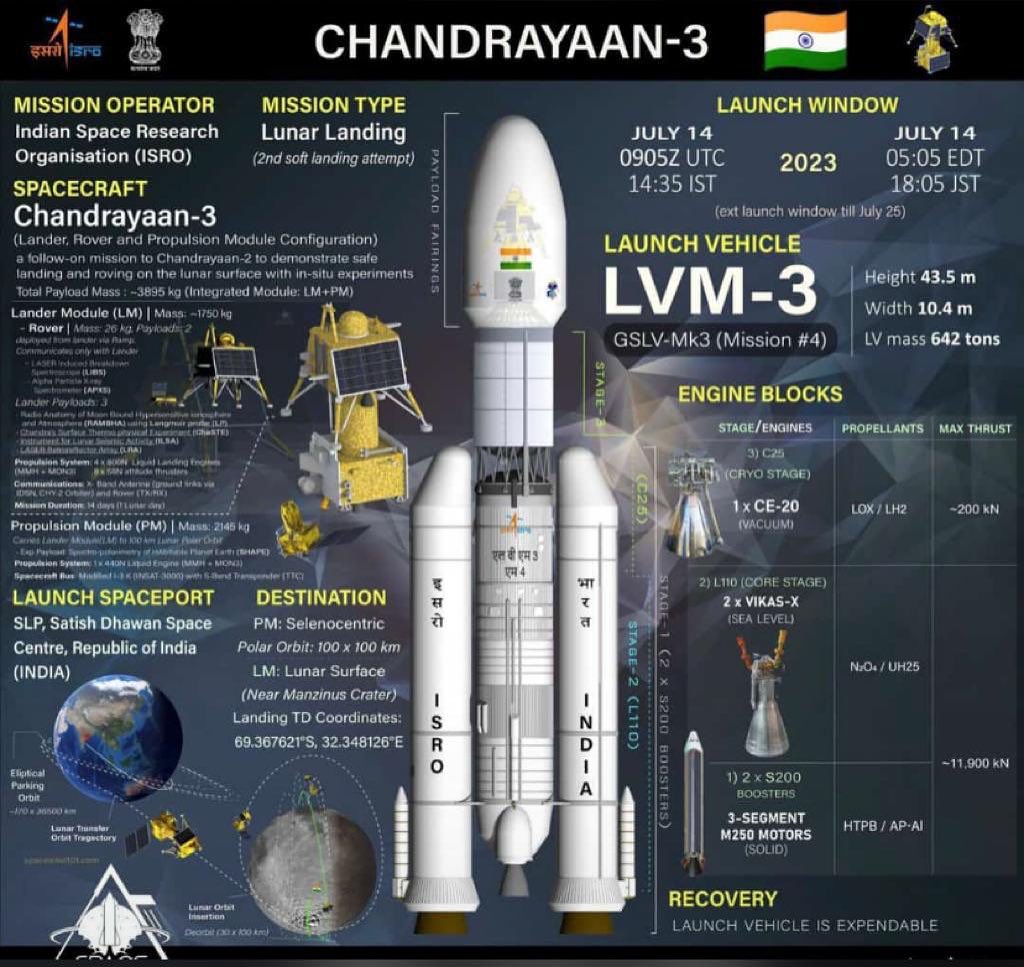Introduction:
The lunar surface has always been a subject of intrigue, with many questions about its origins and evolution. India’s Chandrayaan-3 mission has provided new insights that have sparked fresh debates and discussions in the scientific community. The mission’s rover, Pragyan, has uncovered evidence suggesting that the Moon might have once harboured a “Magma Ocean,” a discovery that could reshape our understanding of lunar history.
Unveiling the Moon’s Secrets with Chandrayaan-3
On August 23, 2023, Chandrayaan-3’s Vikram lander successfully touched down on the lunar south pole, a region that had never been explored before. Over the next two weeks, the Pragyan rover embarked on a meticulous journey, covering around 100 meters, gathering invaluable data and offering evidence that hints at a once molten lunar surface.
The Magma Ocean Hypothesis
The idea of a “Magma Ocean” on the Moon isn’t entirely new but was once merely speculative. Chandrayaan-3’s findings have given this theory new life. According to a study published in Nature, the data collected by Pragyan suggests that the Moon’s surface may have once been covered by a vast ocean of molten rock. This Magma Ocean would have existed during the Moon’s early formation, around 4.5 billion years ago.
Ferroan Anorthosite: Clues to the Past
One of the most compelling pieces of evidence supporting the Magma Ocean theory is the discovery of ferroan anorthosite (FAN) in the lunar soil. This type of rock is believed to have formed as the Magma Ocean cooled, with the lighter minerals floating to the surface to create the Moon’s crust, while heavier minerals sank to form the mantle. Pragyan’s findings align with data from earlier missions, reinforcing the idea that the Moon’s crust has a consistent composition.
Challenges and Contradictions
While the data supports the Magma Ocean hypothesis, there are some contradictions. Notably, the presence of magnesium in the lunar soil, as detected by Chandrayaan-3, poses challenges to this theory. Previous missions, including the Apollo missions, have also provided data that complicates the Magma Ocean narrative. However, despite these challenges, the consistent composition of the lunar soil suggests that the Magma Ocean theory still holds significant weight.
A Milestone in Space Exploration
As we approach the first anniversary of Chandrayaan-3’s historic landing, it’s clear that this mission has significantly advanced our understanding of the Moon. The data collected by Pragyan has opened new avenues of research and provided a wealth of information that will continue to fuel scientific inquiry for years to come.
Conclusion:
Chandrayaan-3 has not only achieved its mission objectives but has also sparked new questions and debates about the Moon’s history. The evidence of a Magma Ocean on the lunar surface offers a tantalizing glimpse into the Moon’s early days, reminding us of the mysteries that remain to be uncovered in our quest to understand our celestial neighbour.
Follow-Up Questions and Answers
1. What is the significance of the Magma Ocean hypothesis for understanding the Moon’s formation?
- The Magma Ocean hypothesis suggests that the Moon’s early surface was once molten, which helps explain the uniform composition of its crust. This understanding provides crucial insights into the Moon’s formation and its geological history.
2. How does the discovery of ferroan anorthosite support the Magma Ocean theory?
- Ferroan anorthosite is believed to have formed as the Magma Ocean cooled. Its presence in the lunar soil, as detected by Chandrayaan-3, supports the idea that the Moon’s crust formed from this molten state.
3. What challenges does the presence of magnesium in the lunar soil pose to the Magma Ocean hypothesis?
- The presence of magnesium in the lunar soil suggests that there may be more complexity to the Moon’s formation than the Magma Ocean hypothesis alone can explain. This discovery challenges scientists to reconsider or refine existing theories.
4. How does Chandrayaan-3’s landing site contribute to the significance of its findings?
- Chandrayaan-3 landed on the lunar south pole, an area that had not been explored before. The unique geological context of this region adds significance to its findings, offering new data points for understanding the Moon’s history.
5. What does the future hold for lunar exploration in light of Chandrayaan-3’s discoveries?
- Chandrayaan-3’s discoveries will likely inspire further lunar missions aimed at exploring the Moon’s surface and subsurface. Future missions may focus on testing the Magma Ocean hypothesis and exploring other unexplored regions of the Moon.
This blog post offers a deep dive into the intriguing findings of ISRO’s Chandrayaan-3 mission, providing readers with insights into the Moon’s mysterious past while keeping them engaged with relevant and thought-provoking questions.






Leave a Reply